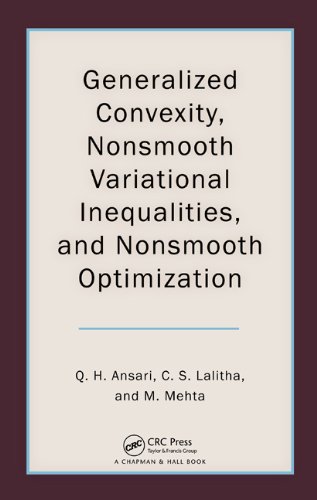

Most ebook files are in PDF format, so you can easily read them using various software such as Foxit Reader or directly on the Google Chrome browser.
Some ebook files are released by publishers in other formats such as .awz, .mobi, .epub, .fb2, etc. You may need to install specific software to read these formats on mobile/PC, such as Calibre.
Please read the tutorial at this link: https://ebookbell.com/faq
We offer FREE conversion to the popular formats you request; however, this may take some time. Therefore, right after payment, please email us, and we will try to provide the service as quickly as possible.
For some exceptional file formats or broken links (if any), please refrain from opening any disputes. Instead, email us first, and we will try to assist within a maximum of 6 hours.
EbookBell Team

4.7
36 reviewsUntil now, no book addressed convexity, monotonicity, and variational inequalities together. Generalized Convexity, Nonsmooth Variational Inequalities, and Nonsmooth Optimization covers all three topics, including new variational inequality problems defined by a bifunction.
The first part of the book focuses on generalized convexity and generalized monotonicity. The authors investigate convexity and generalized convexity for both the differentiable and nondifferentiable case. For the nondifferentiable case, they introduce the concepts in terms of a bifunction and the Clarke subdifferential.
The second part offers insight into variational inequalities and optimization problems in smooth as well as nonsmooth settings. The book discusses existence and uniqueness criteria for a variational inequality, the gap function associated with it, and numerical methods to solve it. It also examines characterizations of a solution set of an optimization problem and explores variational inequalities defined by a bifunction and set-valued version given in terms of the Clarke subdifferential.
Integrating results on convexity, monotonicity, and variational inequalities into one unified source, this book deepens your understanding of various classes of problems, such as systems of nonlinear equations, optimization problems, complementarity problems, and fixed-point problems. The book shows how variational inequality theory not only serves as a tool for formulating a variety of equilibrium problems, but also provides algorithms for computational purposes.